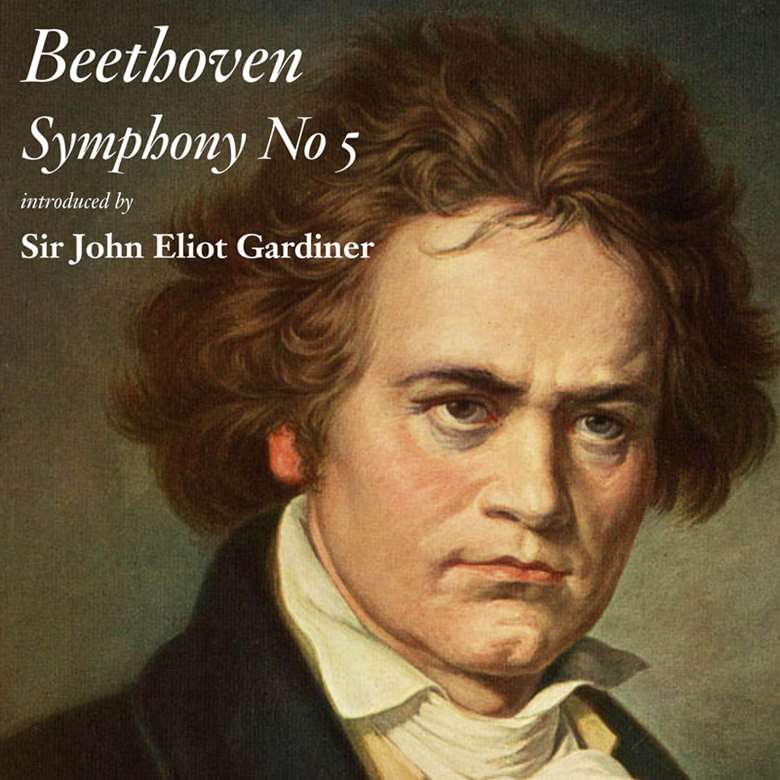Beethoven's Symphony No 5, introduced by Sir John Eliot Gardiner
Gramophone
Monday, October 13, 2014
Beethoven’s Fifth is, says the English conductor, a revolutionary symphony akin to a call to battle

You don’t get anything more iconic than this symphony, especially its opening bars; and I don’t need to elaborate on all the different interpretations assigned to those bars, whether it’s ‘Fate knocking on the door’ or the ‘V for Victory’ Morse Code signal in the Second World War. I’m not sure how helpful any of that is. What does help, however, is to know a little bit about the political views and sympathies of Beethoven at the time of its composition. He went through various permutations of left-wingery and right-wingery, but at this point in his life he was really under the spell of the French Revolution, which appealed to his imagination and his sense of frustration. He was born in Bonn but now he lived in ultra-conservative Vienna, where any political message had to be encrypted. He was a great admirer of Luigi Cherubini, a composer of Italian origin who lived in France; and the famous theme that opens this symphony is derived from Cherubini’s revolutionary Hymne du Panthéon of 1794. Its rhythms and even the melodic outline, to some extent, lurk in the background of this symphony. Chenier’s words for that piece were overtly revolutionary – ‘We swear, sword in hand, to die for the Republic and for the rights of man’ – and it was a heck of a thing for a German composer to encode, in a symphony without words. If this had come out into the open in a city as incredibly reactionary as Vienna, he would have been incarcerated, there’s no doubt about it.
The extraordinary thing is what he does with that theme, because it’s so unbelievably brief. It also starts on a cushion of a quaver rest, not on a downbeat. As a conductor, the challenge is to make sure that those three notes – the repeated notes – sound off the beat, so there’s quite a technique involved in establishing the motto of the entire symphony. The theme is all-embracing and Beethoven uses it in extraordinarily concise and compact ways. I think it helps to know the words of the original Cherubini Hymne, where the second notes carry all the emphasis. I try to get the musicians to express that with their bows and their embouchures. There is an inexorable drive to this movement, an élan terrible, a propulsive energy akin
to a call to battle.
The second movement is so unbelievably gentle and trouble-free in comparison. It has a delicious lilt to it in the melody that begins in the violas and cellos – a lissom, fragile quality which is so beautiful. It’s tricky to pull off, because you have these dotted rhythms which still have to register to the ear of the listener even though they are legato. So you need a vertical energy that bounces the rhythms away from the horizontal, combined with the legato flow of the horizontal. This movement is the perfect riposte to those who think Beethoven is all just blood and thunder. Then the movement explodes into something majestic and almost militaristic in the brass – with a rousing energy. The series of variations that follows is very rich in fantasy and sheer accomplishment in the compositional process. Then a darkness falls, as the cellos provide an echo of the first movement, and then there’s that marvellous moment when he speeds up. The più molto section near the end feels almost like a creature of some sort that is suddenly uncaged and allowed into the open air.
The third movement has no marking. It’s sui generis. Beethoven here is claiming the right to be original, to be eccentric, to break away from the rules: this is a long way away from a Haydn minuet, for example. The opening is just a preparation for this tremendously assertive triple rhythm, which starts in the horns. Then he does something really brilliant. He writes a sort of a romp as a trio section, starting in the bass-line, almost throwing the gauntlet down. It feels so rhetorical, you sense there must be a text behind it. This theme feels not abstract but ‘word-generated’, but I have never been able to find a source for it. When he returns to the principal theme after the trio, there is a squeaky-door type of sonority in the strings and the clarinet has the main theme. It’s frog-like in its witty, strange, eerie way; and serves as a preparation for one of the most astonishing passages in the whole of Beethoven.
The transition into the finale begins without a break, with an A-flat pedal and the timpani playing the median, not the tonic. It’s suppressed. The tension mounts inexorably. This is like a furnace burning up and always puts me in mind of the end of Berlioz’s Benvenuto Cellini. There is a triumphal shine and sonority – an éclat triumphal – as we go into C major. It’s one of the most exciting moments in the whole of symphonic literature. He brings in three trombones, the piccolo and the contrabassoon, so you have an association with Turkish military bands. It all feels Napoleonic in its fervour. Imperceptibly, there comes another political motto, a reference to Rouget de Lisle’s Hymne Dithyrambique, specifically the phrase ‘Chantons la liberté’. It emerges gradually in the bass-line, passing to the trombones and the bassoons, and then to the violins. Then the whole orchestra is singing a hymn to liberty. Of course, being Beethoven, he doesn’t stop there. He calls a halt to proceedings, goes back to the theme of the previous movement and does the whole thing again, this time with even more eruptive force, so you get a da capo that isn’t really a da capo. It’s epic; it’s rousing; and it’s awe-inspiring in the best sense of the term.







